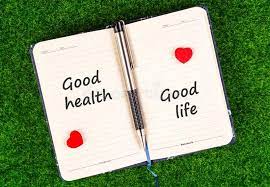
SIMPLE STRATEGIES FOR MANAGING SODIUM INTAKE
In America, Sodium seems to be a problem. Even the national dietary recommendations for Americans encourage dietary habits which would reduce total intake, such as minimizing consumption of processed meats or dairy products (1). Why is there a push to reduce sodium intake? Why should you reduce your salt intake?
Learn how to reduce your sodium intake by reading the tips below.
ALL ABOUT SALT
As a first step, sodium is an important electrolyte which regulates the fluid balance in the body. Water is drawn to sodium and sodium is an important contributor to high blood pressure. The World Health Organization defines excess sodium as more than 5g of sodium per day.
This high intake has been shown to cause significant increases in blood tension, provoke changes in vascular resistence, induce inflammation and increase the risk of cardiovascular issues.
Dietary Guidelines For Americans recommends a daily sodium intake of 2300mg/day. Around the world, it has been shown that most people consume 3-6g/day. Most of the world consumes more than recommended sodium… is this a concern?
The current literature says that it all depends. It has been shown that intakes greater than 5g/day put you at the highest risk of cardiovascular disease and complications.
Nevertheless, there are many other factors to consider. First, you must consider your physical activity and the sweat rate. Individuals in the athletic population or those who perform physically demanding outdoor work may need to consume a higher sodium intake due to sweat losses. Sodium is an important component of optimal hydration. Some elite athletes may require upwards of eight grams per day to stay hydrated.
What are some simple ways you can tell if sodium is too much for you health ?
You should monitor your sodium intake if you are not physically active. If you are not exercising or sweating a lot, you may want to monitor your sodium intake.
You should definitely reduce your sodium intake if health high blood tension. The sodium has a direct relationship with blood pressure because it increases the water retention in arterial vessel. The mechanisms that control blood pressure are affected greatly by sodium intake, particularly if it’s consistently above recommended/natural levels.
You have a dark urine. This is more an indicator of your hydration level. The darker color of urine is caused by the solutes excreted by the body (including sodium). Dark yellow or brown urine can be a sign of dehydration, as a large number of solutes is being excreted by your body. This problem can be solved by reducing sodium intake and drinking more water.
How to Cut Back on Salt
You’re now looking for easy ways to reduce your sodium intake or simply minimize it. What simple changes can you make to your diet right now? You need to first be aware of the hidden places where sodium can hide.
Soups and frozen foods are the obvious choices. These products also contain a large amount of sodium.
Breads/Baked products
Crackers
Sodas
Nuts/Nut Butters
Cheeses/dairy Products
Meats that are smoked, salted, cured or smoked (including cold cuts, sausages and bacon), sardines, anchovies and smoked salmon.
Beef jerky
Fast food
Canned Food
Olives
Pickles
Chips
Pretzels
Sauces such as soy sauce, ketchup, ranch dressing and ranch dressing
This does not mean you should eliminate all sources of health in your diet. Making simple changes, such as choosing fresh food over canned or frozen foods; eating less fast food and processed meats; and drinking water instead of soda or electrolyte beverages can help you reduce your daily salt intake.
How much salt is too much?
Looking for a more detailed guide? Check the back of your food labels! A single serving of food that you choose has more than 20% of the Daily Value for sodium. This is a sign it’s too high. A single serving of the product you select should contain less than 140mg.
Even those with normal blood pressure can benefit from lowering sodium intake! What is the biggest benefit? Improved blood pressure and cardiovascular fitness! A meta-analysis found that reducing sodium consumption for four weeks was effective in lowering blood pressure, regardless of gender or ethnicity.
As mentioned, sodium is an important electrolyte for the body. The sodium reserves are tightly controlled. When sodium intake is low over a long period of time, it can affect many metabolic and physiologic processes. The most harmful effect on the cardiovascular system occurs when sodium intake falls below recommended levels.
What is the take-away? The takeaway? The literature says that 4g/day are the ideal amount. A safe range is between 3-5g/day. Below 3g/day, is too low and above 5g/day, is too high (3).
SIMPLE TIPS TO MANAGE SODIUM
Is it possible to reduce salt easily? Absolutely! Get moving in the sauna or on the treadmill! Sweating is the fastest way to reduce your total salt content. Remember that sodium levels in the body are tightly controlled to ensure optimal regulation. They will also change depending on what you eat.
If you want quick fixes, however, it’s best to reduce sodium intake for a couple of days (perhaps by half), drink lots of fluids and, as we mentioned earlier, sweat!
DOES DRINKING WATER LOWER SODIUM?
It’s quite a complex process. The kidneys are responsible for the system that regulates sodium and fluid excretion/absorption. This system is closely regulated in order to maintain blood pressure and a specific sodium balance.
The body is triggered when the blood volume or the sodium concentration are too high. (So yes, drinking more fluids will help you to urinate in this situation). When blood volume or sodium concentration is too low, kidneys are triggered.
Recap: It seems that current literature may not support past recommendations. Some people told that they were consuming too much sodium may actually be within the optimal limit. Every person has a unique case. You can also reduce your intake if you suffer from medical problems or feel “swollen”.
Keep your body active.
Choose water instead of sodas/sweetened drinks.
Fresh foods are always preferred over canned and frozen items.
Limit fast food in your diet.
Consume less dairy products daily.
These small changes will help to reduce your sodium intake, and you’ll feel better in general.



